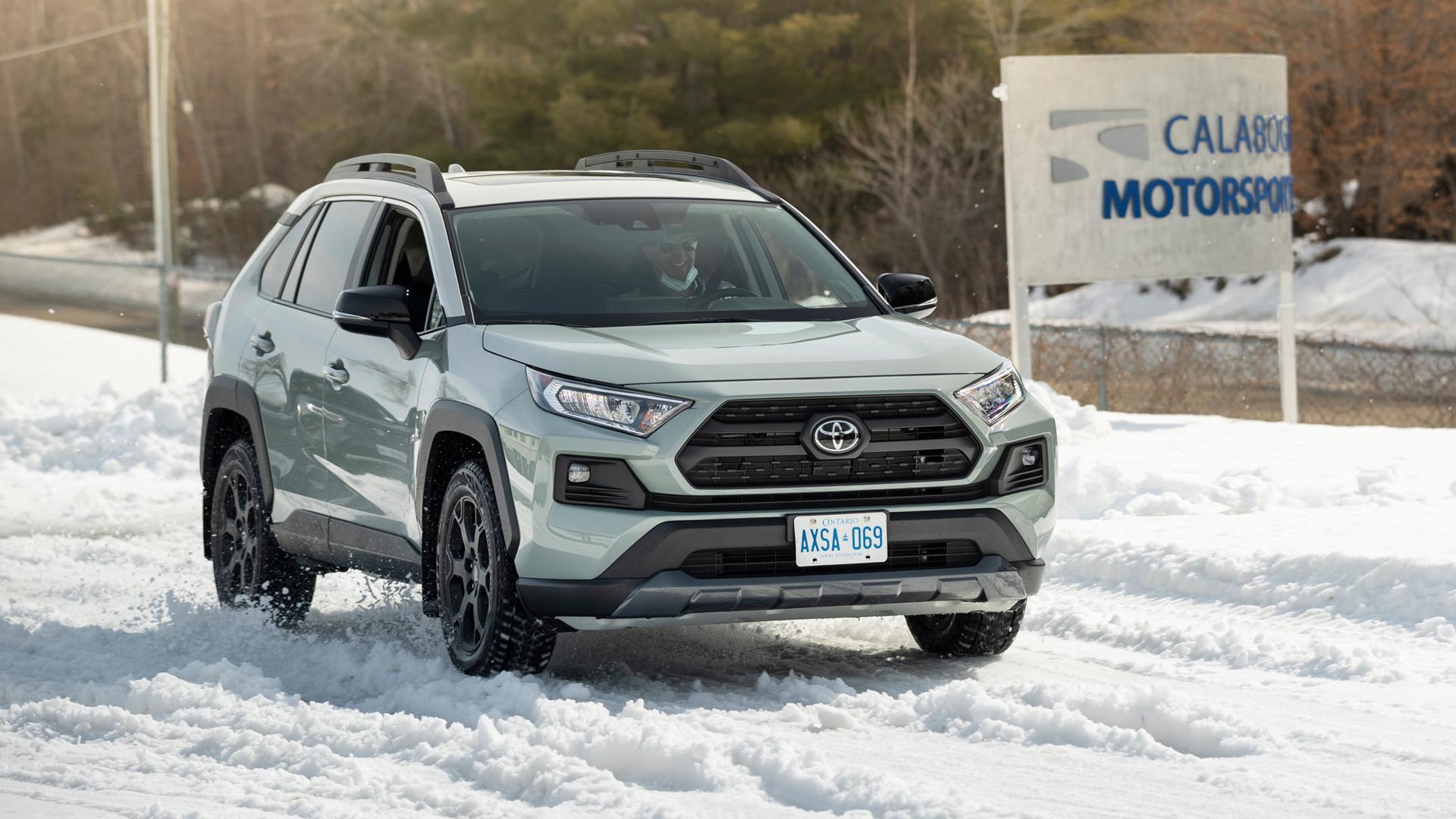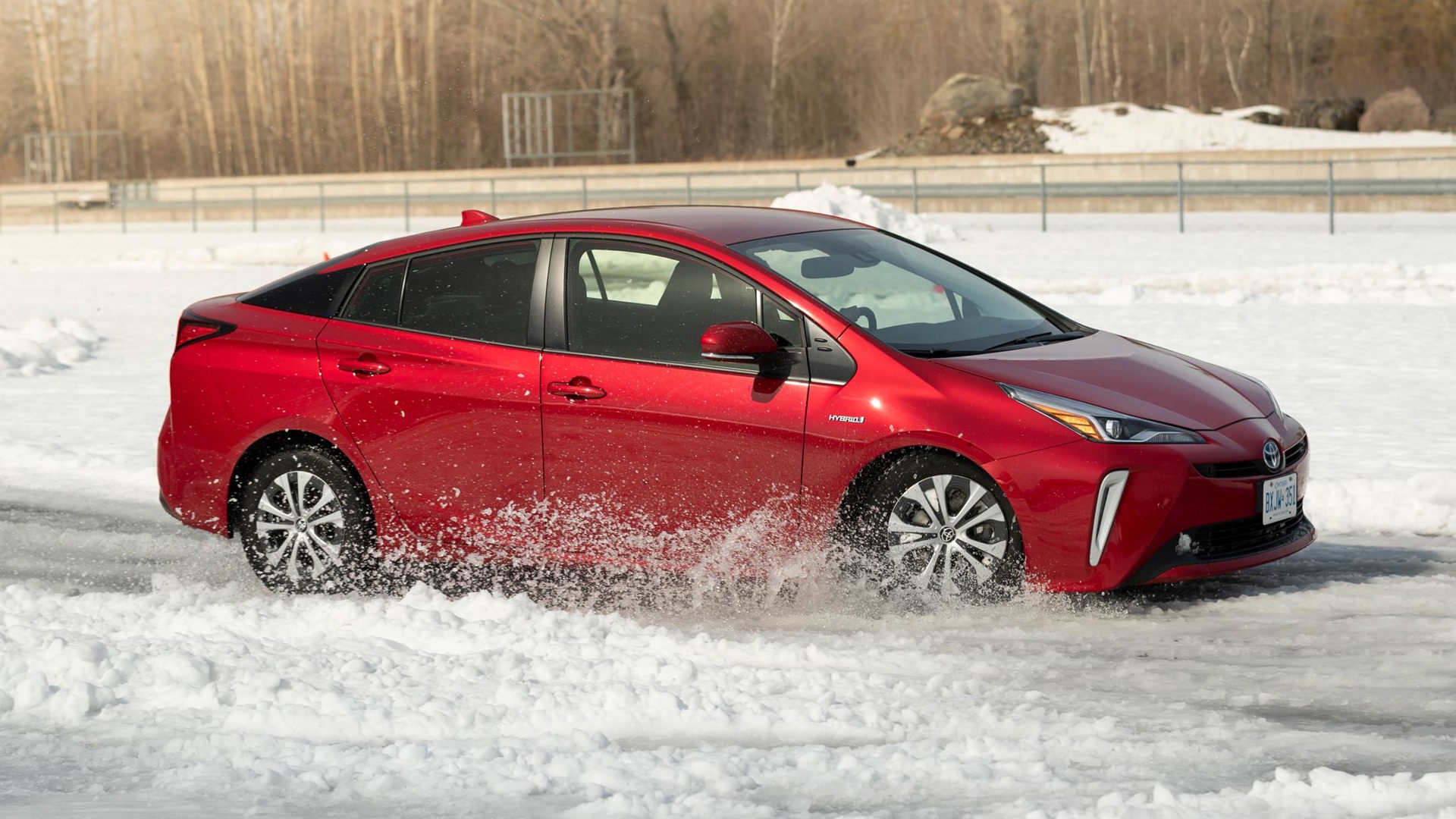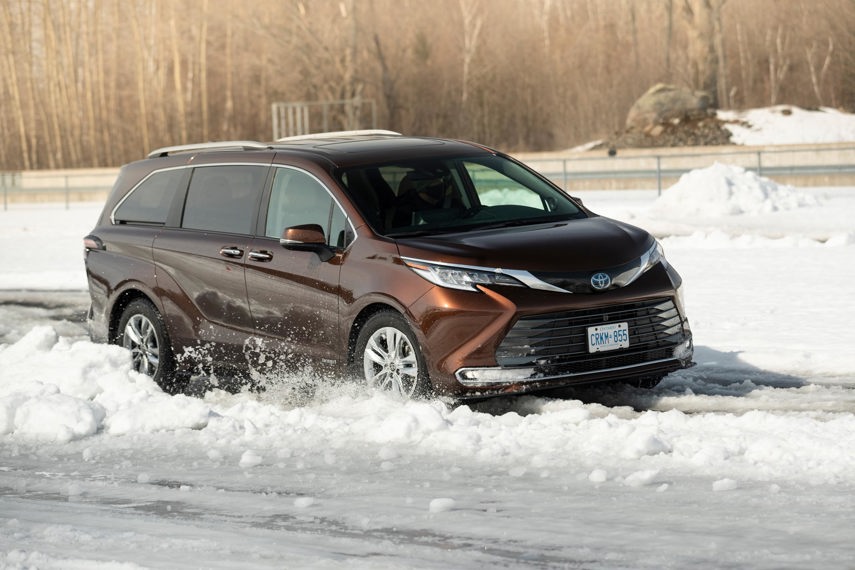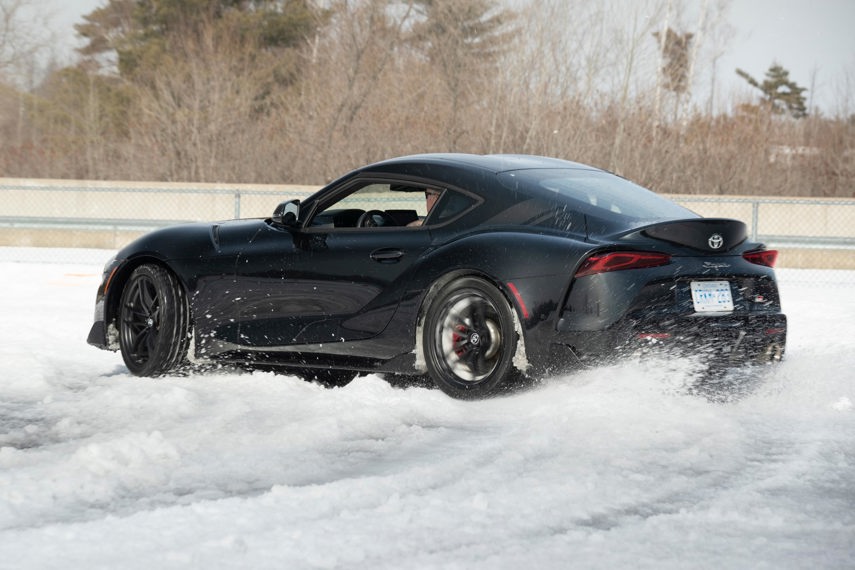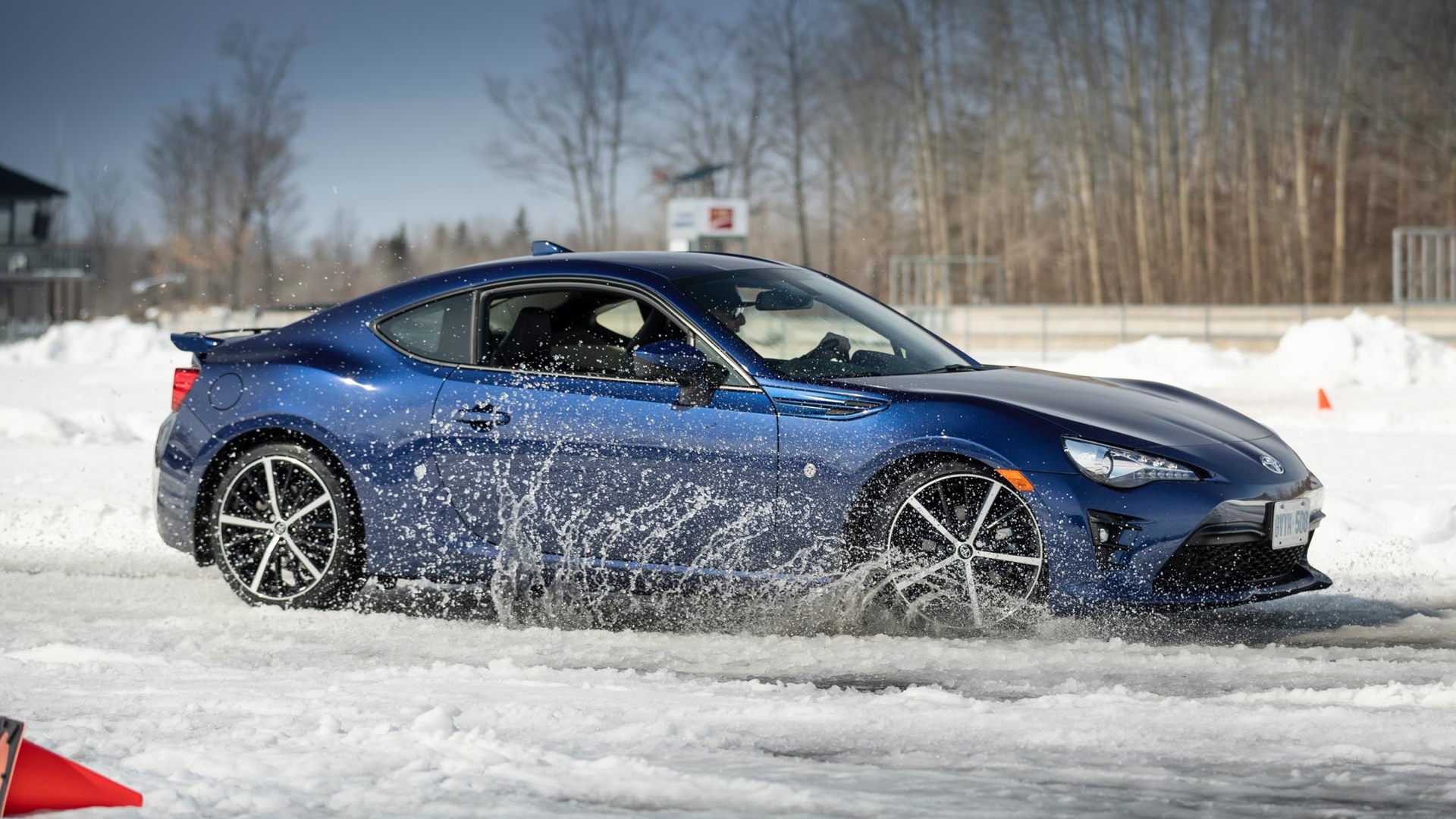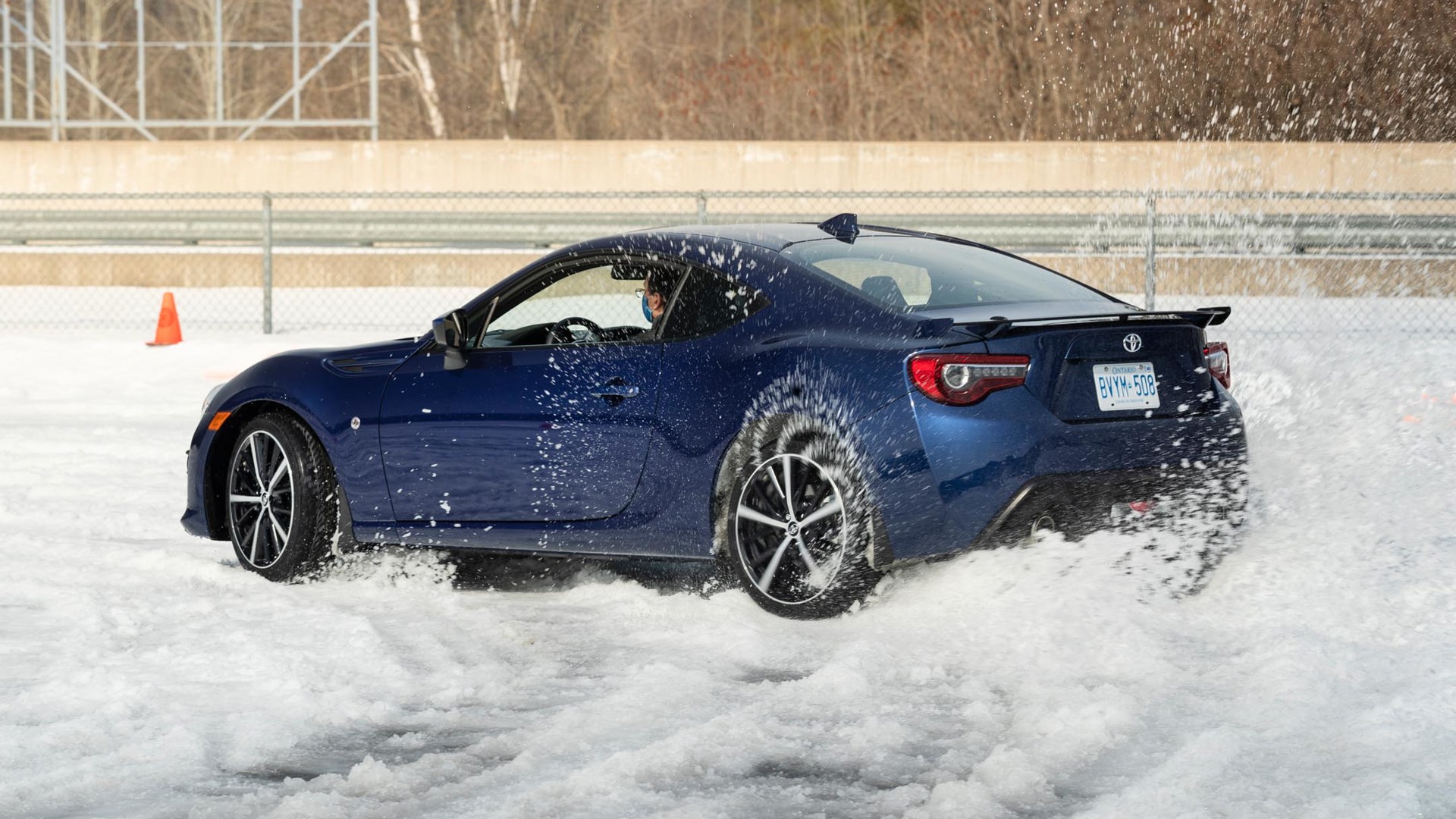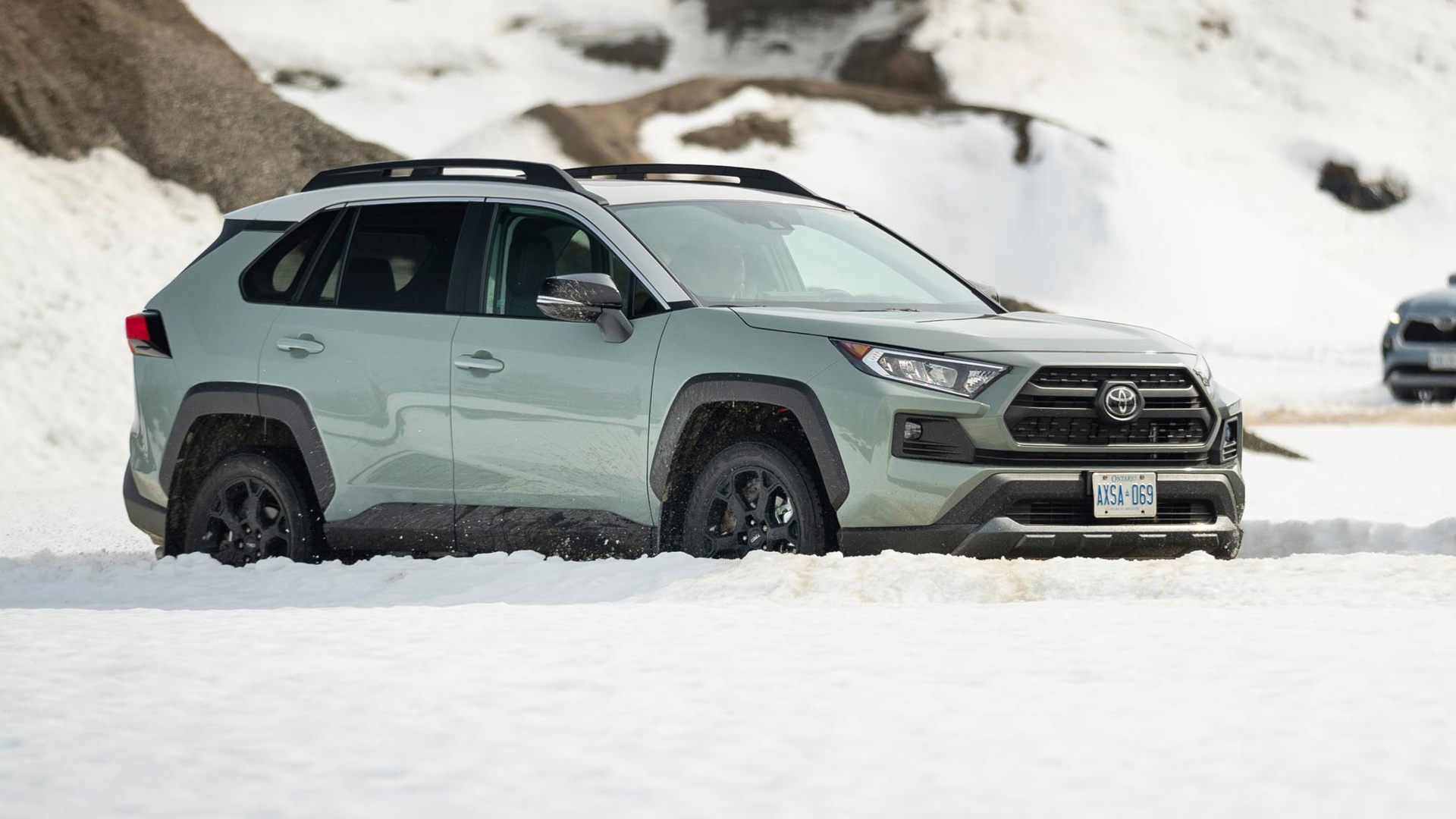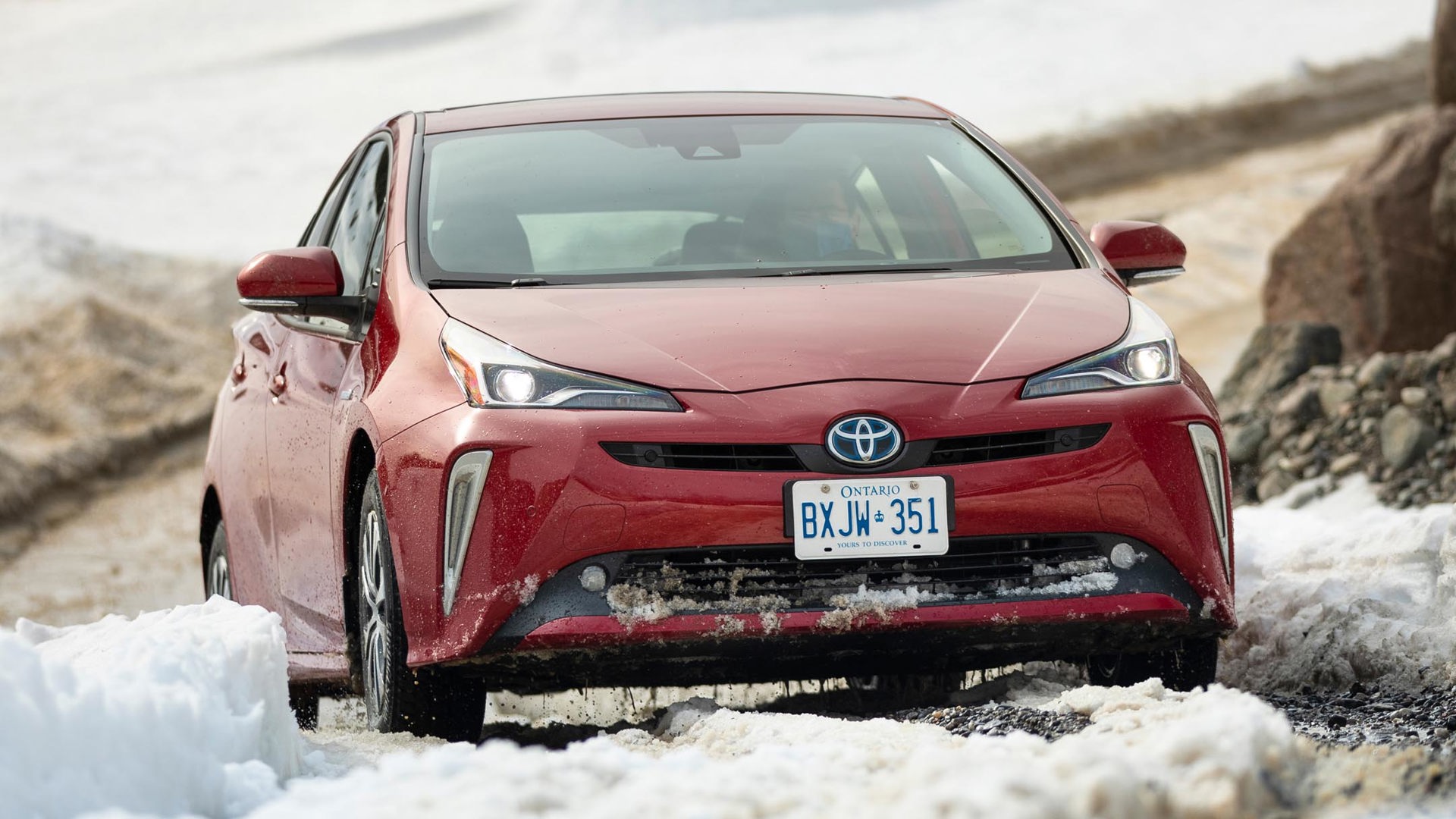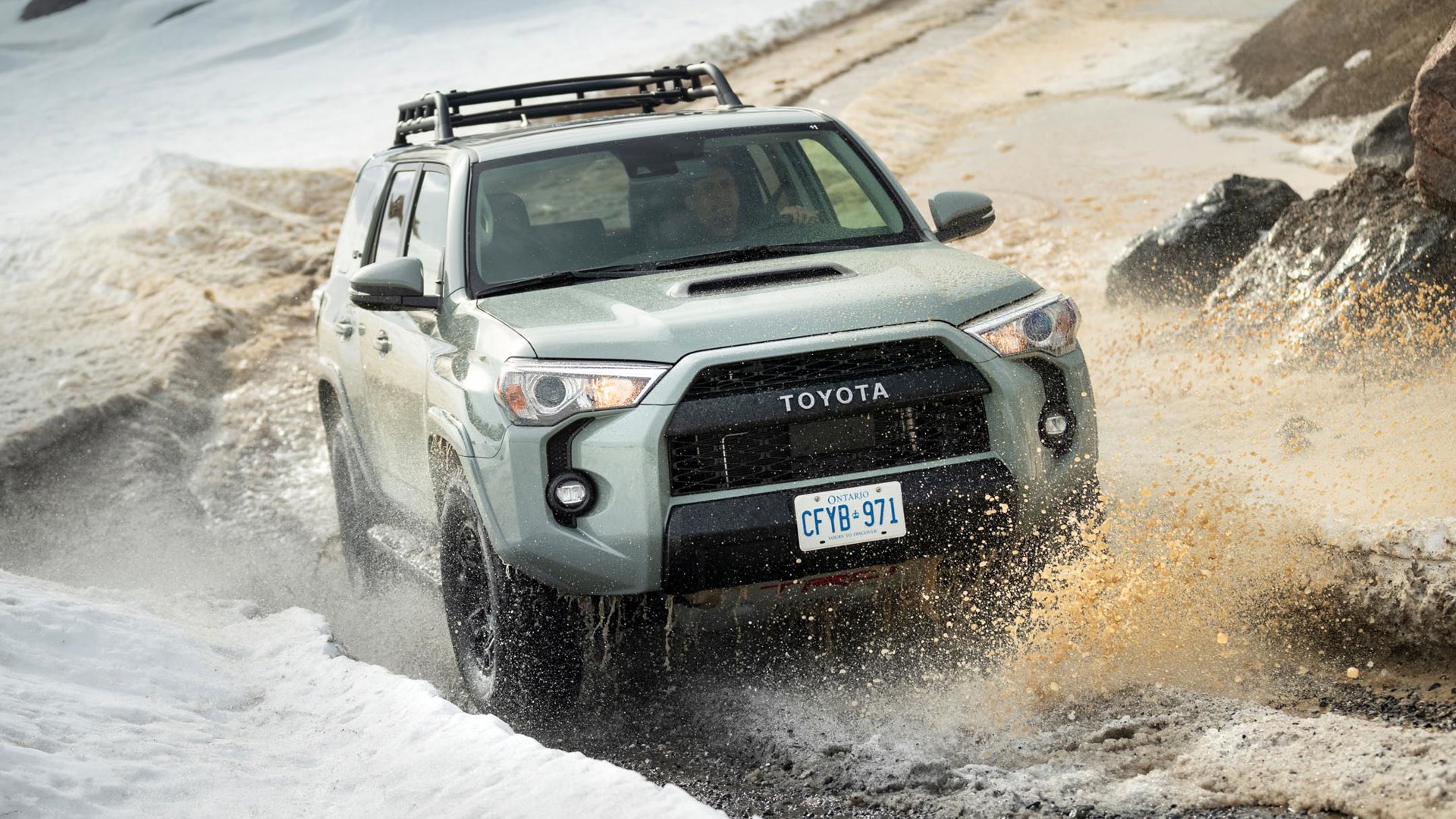All-wheel drive (AWD) capability was once a rarity for consumer passenger vehicles. Buyers could typically only choose from either front- or rear-wheel drive not too long ago, as four-wheel drive was generally limited to trucks. All of the aforementioned options have their own unique driving characteristics as well as distinct pros and cons.
Prior to the universal adoption of traction control and intelligent anti-lock braking systems, front-wheel drive vehicles had a tendency to plow when traction was lost, while having power at the rear wheels could spook drivers by exhibiting unwanted oversteer. Four-wheel drive vehicles had their own challenges as drivers had to manually disengage the front wheels, and fuel economy was heavily impacted.
All-Wheel Drive Goes Mainstream

Over the past 25 years, all-wheel drive has become an increasingly popular must-have feature for Canadians purchasing a car or SUV. Whether designed to improve performance or poor weather drivability, there are more options than ever before and systems have become increasingly sophisticated.
All-wheel drive has become something of an all-encompassing term, but not all systems are created equal. It is important to understand the subtleties between systems in order to make more informed purchasing decisions and be the safest driver possible.
Four-Wheel Drive
![]()
Sometimes confused with all-wheel drive, four-wheel drive systems differ in a number of ways. A 4x4 system normally requires the intentional engagement of an additional transfer case through a button or gearshift lever (although automatic four-wheel drive does exist) for a 50/50 front to rear power split with both axles turning at the same rate. Most four-wheel drive vehicles also offer a lower gear ratio for slow speeds in stickier situations over challenging terrain.
Modern All-Wheel Drive
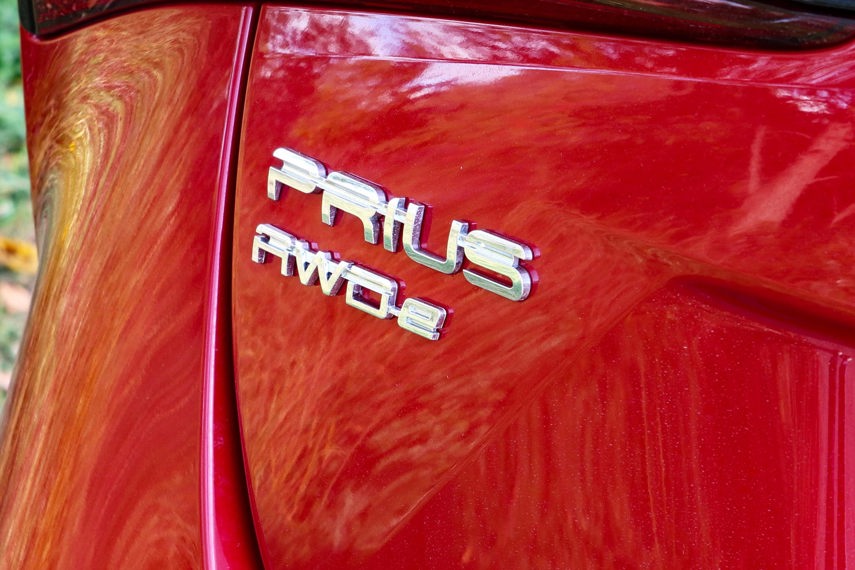
Contemporary all-wheel drive vehicles are often front- or rear-biased and can be categorized as having either part-time or full-time all-wheel drive. Many have a centre differential that distributes torque as needed. These systems typically require zero intervention or input from the driver and are fully automatic.
Systems have become far more sophisticated over the years, as they are now able to monitor and adjust the amount of torque sent to the wheels that have grip. Some systems automatically transfer power from front to rear in order to prioritize fuel economy. performance, or traction, while others are able to adjust from side to side or even to one specific corner. While they may not all send power to all four wheels all the time, these systems usually distribute power where it's needed automatically.
Hybrid All-Wheel Drive
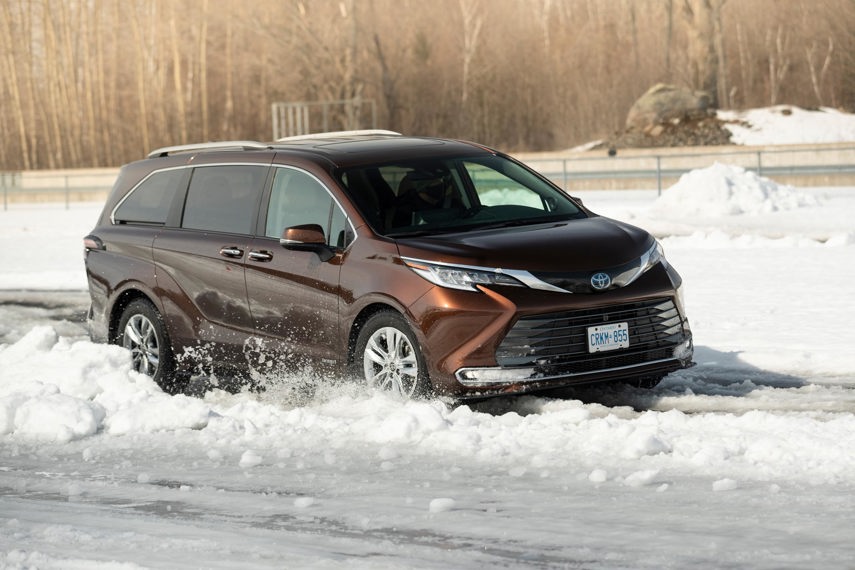
The automotive industry is leaning towards a future of electrification, which could be via hybrids, plug-in hybrids (PHEVs), or full electric vehicles (EVs). Toyota Canada expects electrified vehicles of various types to make up 40 per cent of its sales by 2025.
Rather than having a mechanical connection between driveshafts, hybrid all-wheel drive systems rely on the use of an electrical one, often referred to as an e-axle. This electric motor can be used alone or in tandem with an internal combustion engine that drives either a front transaxle or rear differential, depending on the application, to provide power to both the front and rear of the vehicle.
Toyota offers 12 traditional all-wheel drive models. The first model to combine hybrid and all-wheel drive capability was the Highlander Hybrid, which was launched in 2006, followed by the RAV4 in 2016, and the Prius in 2019. In the past year, Toyota has added three new electrified all-wheel drive models to its lineup, the RAV4 Prime, Sienna, and Venza. The last two models are now exclusively offered as hybrids, either as front- or all-wheel drive. The added benefit of an all-wheel drive hybrid is that it provides additional traction and poor weather capability without impacting fuel economy.

I was invited to take part in a winter driving program where I could experience the merits of various systems side-by-side on a closed course under the same conditions. Some of the comparisons were more closely matched than others. For instance, one would expect the 382-hp GR Supra sports coupe to blow the sliding doors off the eight-seat Sienna minivan in a drag race. With an electric motor independently operating the rear wheels and the 2.5L four-cylinder engine driving the front wheels, the Sienna pulled lengths ahead of the Supra, which was left literally and figuratively spinning its wheels in the snow, even on winter tires. The same thing happened when lining up an 86 beside a Prius Prime that has a combined 121 hp thanks to its 1.8L four-cylinder engine and electric motor.
The rear-drive Supra and 86 on hand were boatloads of fun as we drifted around the snow-covered skid pad, but even outfitted with winter tires, their traction paled in comparison to the models with all-wheel drive. Having grip at all four wheels in the hybrid models provided far superior traction and confidence through a variety of conditions – including an undulating route through a snow-covered quarry.
Apples to Apples
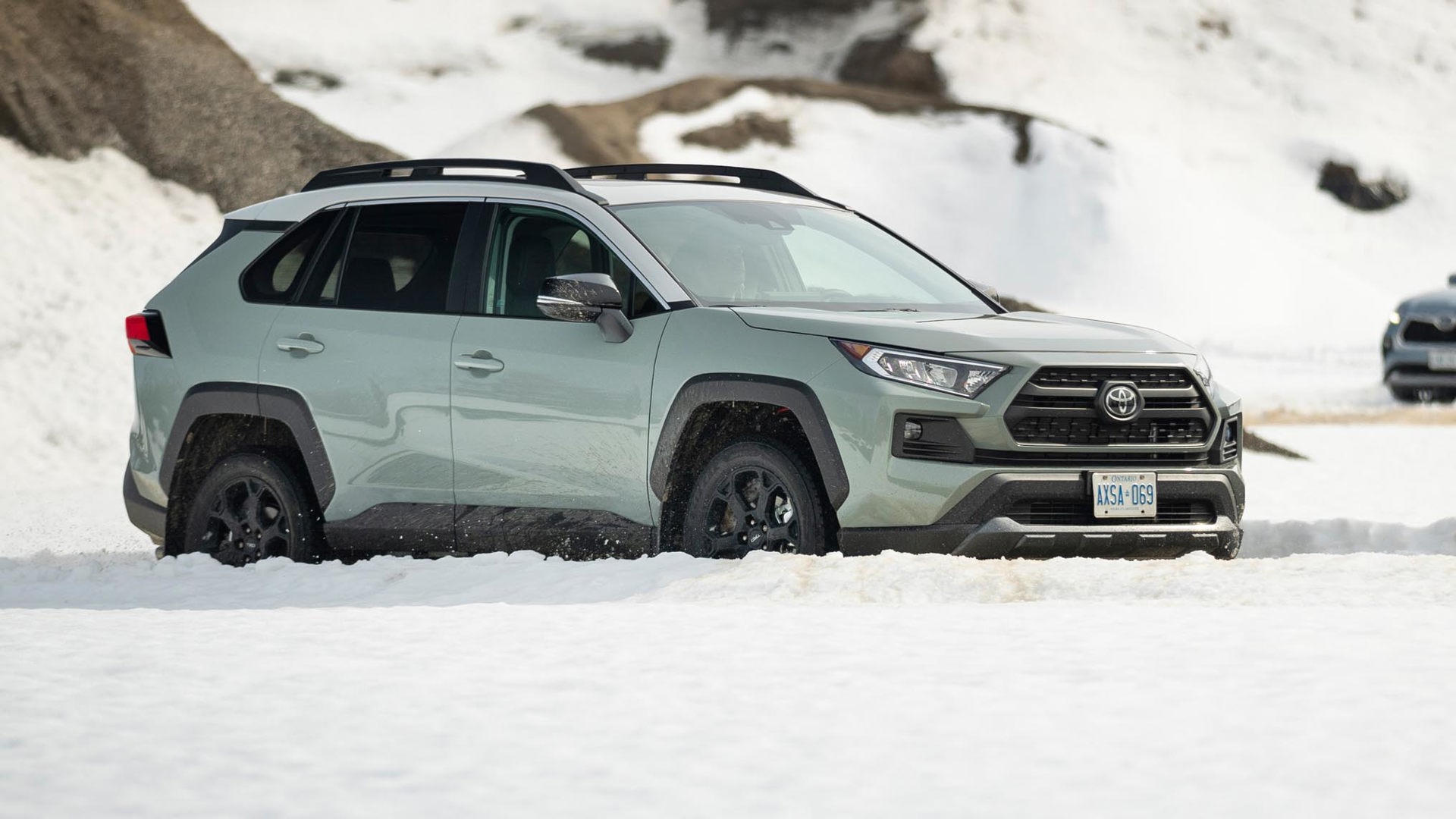
The comparisons between the rear-wheel drive 86 and Supra versus the all-wheel drive Sienna and Prius weren’t exactly a fair fight, but these challenges were set up specifically to prove a point. Pitting RAV4 versus RAV4, we competed in a number of head-to-head drag races using several trims of the compact SUV that included both front- and all-wheel drive, utilizing gas, hybrid, and plug-in hybrid powertrains.
Cycling through each vehicle in various driving modes allowed us to get a better impression of each technology. Operating in electric mode driving one axle resulted in poor traction, but with all four wheels being powered in hybrid mode, the RAV4’s winter weather traction was very impressive.
A New Sensation
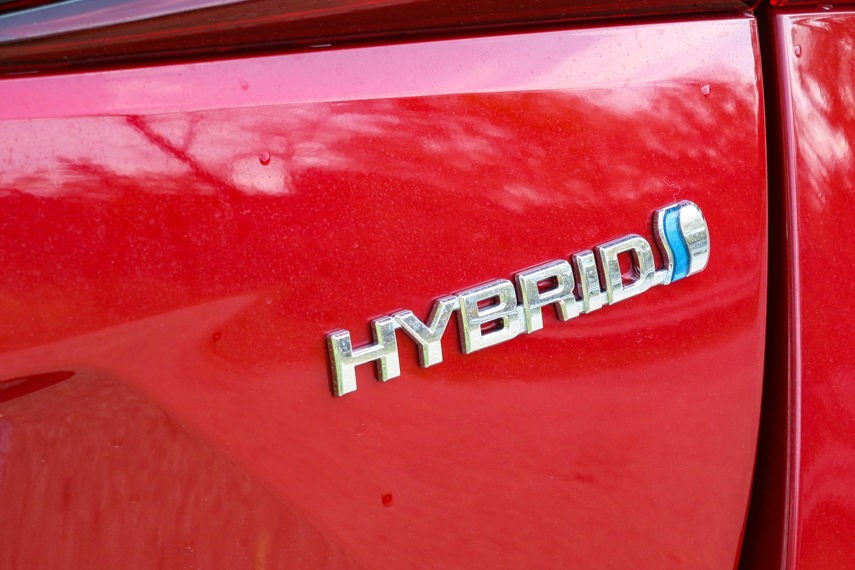
Having a hybrid powertrain operate one axle independently feels strange at first but becomes second nature quickly. Power is on hand immediately with no delay. For those who haven’t experienced this kind of electronic intervention before, it is a similar sensation to the feeling of having ABS (anti-lock brakes) pulsate under the pressure of the brake pedal for the first time.
Driving Behaviour
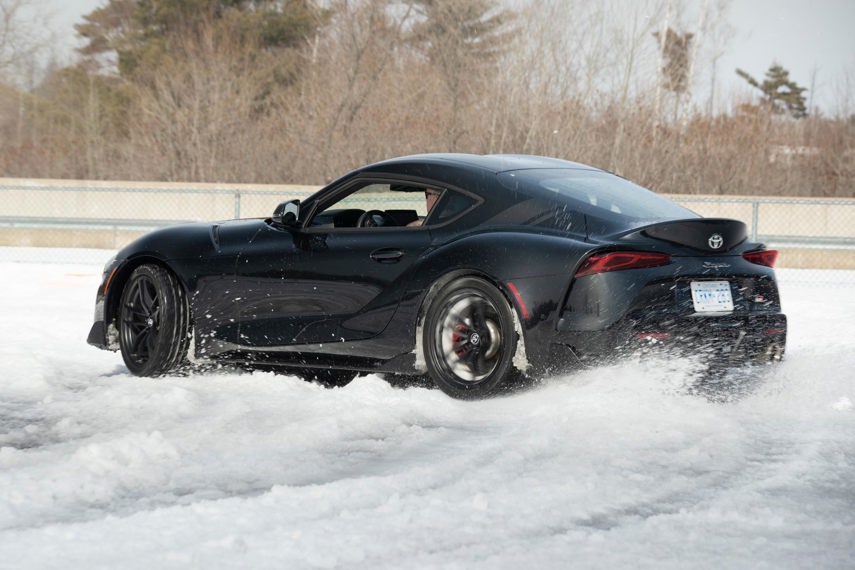
Driving an all-wheel drive vehicle equipped with quality winter tires still requires caution. Being able to accelerate twice as quickly doesn’t mean you will be able to stop twice as fast. Whichever all-wheel drive solution you choose, be sure to get educated on how the system works, so that you’re able to use it to its full advantage and get the most out of the driving experience in all kinds of driving conditions.
